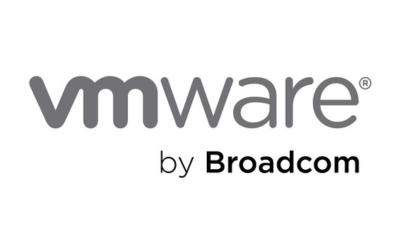The digital workspace movement has been building over the last several years, as companies shifted more of their workloads to software applications and cloud systems. Even if employees were in the office, they were usually working on applications they could easily access from elsewhere. Companies recognised the need to unify the work experience from corporate locations, but what about from remote locations?
That’s where a digital workspace comes into play. It’s a virtual replacement for the traditional office space that offers employees access to all the digital tools, applications, and systems they need to perform their work. A digital workspace aligns the right technology with your workloads and processes to power your company’s objectives.
Creating a digital workspace is more of a marathon than a sprint. It’s not just a project that’s completed in a quarter. It requires a well thought-out strategy that’s rolled out in several phases in a few weeks or months.
If your company is considering creating a digital workspace for your employees, you’re in the right place. We created this comprehensive guide to creating a digital workspace that explains what it is, the benefits to a digital workspace, how to set up a foundation for one, and more.
Why have a digital workspace?
A digital workspace offers employees a common set of tools that enable them to work together in a frictionless way. It gives them more flexibility for remote work as they can work from anywhere on any device as if they were at a corporate location. From an IT perspective, a digital workspace allows companies to enable the same type of security as in their corporate locations and be confident in the protection surrounding business-critical resources, no matter where they’re accessed from.
Today’s employees also expect a digital-centric work environment no matter their employer’s industry or market. It’s becoming more of a given today, so not having a digital workspace may impact a company’s ability to attract and retain talent. According to McKinsey, 52% of employees would prefer a more flexible workplace today, whether that’s hybrid or fully remote. Another UK study found that 71% of workers want flexible work options to be made permanent and 66% of business decision makers are considering redesigning physical spaces to better accommodate hybrid work. Extreme flexibility and hybrid work options will define the future of work in the near future.
Features of the digital workspace
As mentioned previously, a digital workspace is the right blend of technology, processes, and work culture that fosters and encourages productivity no matter where employees work from. It’s more than just moving workloads to SaaS applications or enabling corporate network access via VPN. Here are just some of the digital workspace components you need for a successful one at your company.
The tech side of a digital workspace
To support a digital workspace, your company needs a blend of several different technologies and approaches, such as:
- Cloud-based software: These encompass everything from file-sharing apps to online email, data visualisation apps to office productivity platforms like Microsoft 365. These options are easy to implement and are more cost-effective, making them a good option no matter your employee work location.
- Hybrid meeting technology: It starts by using the right online meeting software that works for your environment, but it extends to the hardware employees use too. Ensure they have the right webcams, microphones, and headphones to ensure clear communications.
- Synchronous and asynchronous communication channels: Email is the obvious communication channel, but many companies are also moving to more synchronous channels like instant messaging in Slack or Microsoft Teams. Having a combination of both types of communication channels ensures that employees can communicate appropriately based on their work style, schedule, and location, since there may be more than just time zone differences at play.
- Easy integrations: With so many apps and systems making up a company’s tech stack today, integrations and interoperability are essential. Every company has particular applications or data stores they need to maintain, whether that’s a legacy app or on-premise database. The digital workspace needs close integration features with anything your company might use both internally and externally to efficiently manage all of your core workloads.
The human side of a digital workspace
To support a digital workspace, your company will also need to look at the human factors and develop strategies, processes, and procedures that work in combination with the technology. This extra work will help ensure your employees can be at their productive best while enabling the tech tools they need to do so.
- Set your work pattern(s): An established work pattern sets the right expectation for everyone, from business leaders to the IT team, existing employees to new ones. Decide whether to offer fully remote, hybrid work, or on-premise patterns, and develop guidelines around each of them. Create a blueprint for how your teams can work together effectively and communicate it with the company. Some roles will need to be office-based some or part of the time, while others can remain remote permanently. How often will employees be in or out of the office, and how can everyone work with remote-working employees? A fully digital workspace will be able to adapt between all of these easily, but employees will want to know what their options are up-front.
- Facilitate collaboration: This is one of the biggest reasons why companies say employees must work in-house but with so many digital collaboration options available today, there’s no need to restrict those who can work remotely if they choose. Invest in the right blend of video conferencing tools, instant messaging, and file-sharing applications to facilitate and enable collaboration the way your employees want.
- Empower employees through self-service: One of the hallmarks of the digital workspace is the ability for people to do as much for themselves through online portals. These portals are integrated with other online platforms and apps that optimise previously manual workflows while enabling employees to be more productive. For example, instead of emailing an IT manager to get a new hire set up, hiring managers can log onto the IT team’s portal and create a “new hire” request that triggers the relevant workflows for the IT team automatically. Employees can access their HR portal to request vacation days and accounting teams can generate a report for business units in under an hour and only two clicks.
- Encourage training for the digital workspace: Some people aren’t used to working exclusively in a digital environment, so your company should invest in the proper training and support to help guide them. That’s especially important for people managers who may be uncomfortable with managing digitally and what tools and strategies are available to them. But even non-managing employees will need training on how to work with colleagues, managers, and other teams digitally since there may be new tools and processes they’re unfamiliar with.
- Be social: It’s never more important to be social with colleagues, yet companies may wonder how to replicate the in-person interactions they’re used to having at the office. Some companies have online co-working hours where employees log on to their video conferencing tools and work “together.” They don’t have to speak to each other, but for some, just seeing others working at their respective remote desks is enough to foster that feeling. Other companies hold regular team online get-togethers where team members share project updates, successes, and challenges. Some have non-work chat streams on Slack or Microsoft Teams to recreate the water-cooler or coffee machine chats people used to have in-house. There are many ways companies can replicate the social aspect of in-person work in a digital workspace; it may take some trial and error to find what works for your employees.
Creating a digital workspace for your company
Now that you see how a digital workspace is all about the right combination of technology and people, how can you create a digital workspace for your company? What steps do you need to take to create one that’s right for your company today and can scale and change as your company evolves?
1. Build for business outcomes
Business outcomes are measurable, quantifiable goals or objectives that your company wants to achieve. They help prioritise initiatives, provide direction, and clarify what success looks like at all levels. By building your digital workspace to support business outcomes, you’ll avoid bolting new tech onto your existing workflows without assessing if they’re relevant or useful.
When you build for business outcomes, you focus on delivering intentional, meaningful, and measurable results through seamless, integrated solutions. For example:
- Creating opportunities for employees to innovate and enhance work products that improve customer satisfaction.
- Encourage employee autonomy by delivering flexible technology that supports it for 80% of your employees.
- Enhance cross-enterprise communication by reducing search times for information by one business day per employee.
- Double growth and professional development opportunities for employees in six months.
- Increase trust among teams by 35%, regardless of physical work location.
2. Understand how the digital workspace aligns with employees, their roles, and their teams
Employees will always want to know how the digital workspace affects them, their daily workload, and how they collaborate with colleagues. Taking an employee-first approach can help business leaders design a digital workspace more successfully because they’ll have implemented the right tools that support the way employees work, improve cross-team productivity, and ensure everyone is working towards business goals.
For example, HR and IT teams spend a lot of time working on routine employee set up requests, so workflow-specific self-service tools can speed those processes and eliminate low-value admin tasks for them. Project and product managers spend a lot of time and effort searching for and gathering information for their distributed teams, so a centralised and cloud-based file storage application would save time and make it easy for the team to review relevant documents.
Since workflows and solutions don’t fit into neat categories, it might be useful to categorise them according to how your company uses them. This way, it’ll be easier to align technologies to workflows and ensure they’re relevant for employees.
3. Find the right technology for your digital workspace
At this step, you’re ready to choose the right technology to support your workflows. Before you jump into assessing new vendors, check your current tech stack to see if you already have the ones you’ll need. Here’s a quick checklist you can use for that:
- Look at your business outcomes and workflows you want to maintain in the digital workspace.
- Identify the types of users and related workflows you need to achieve the business goals.
- Map those to the technology benefits that can deliver those workflows, such as easy access, good collaboration and communication, business analytics capabilities, training and support, and specialisation, since some of your work may require unique features.
- Identify the technology solution that provides the benefits and features you need.
Once completed, you’ll know which tech you already have, which should be retired, which should be repurposed or retasked, and which you’ll need to invest in.
4. Communicate the digital workspace vision
Since a digital workspace is a human-centric work approach and, some would say, culture, it’s critical to communicate the vision you hope to achieve and sustain with it. A good communication strategy is vital when transforming an existing company into a digital workspace, but it’s good practice to continue communicating the vision regularly.
A successful digital workspace communication strategy:
- Delivers updated, relevant personalised content to strengthen productivity and provide growth opportunities.
- Provides easy-to-digest curated information in the regular flow of work.
- Inspires dialogue between all levels in the company to improve and foster employees’ sense of belonging and connection to the overall mission.
- Reminds employees of where, when, and how to find solutions and information to help with workflows.
Keeping the lines of communication continually open with relevant and honest communication shapes a more positive company culture by embracing employees more fully and ensuring their needs are always taken into consideration. It increases adoption of new tools and workflows by making change desirable for employees. It drives behaviour change by increasing transparency of every decision since employees will better understand how it impacts them. Open communication removes the friction that may exist between employees, teams, and even between employees and their workflows because everyone will have a clearly understanding of why things are being done the way they are done.
5. Improve & enhance your workspace regularly
The more advanced a digital workplace is, the better it is at delivering business outcomes, positive work experiences, and effective use of technology. But that doesn’t mean it shouldn’t change if a new software application, workflow approach, or other improvement pops up at some point.
A digital workspace maturity model helps measure the progress of your workspace so you can determine performance and effectiveness today and what changes you might need to make to enhance it later on. Here are 10 questions you can ask yourself or your company to asses where you are:
- Are your workflows or technology siloed with employees and teams?
- Do you only have limited functionality in your current tech stack for collaboration, analytics, and self-service?
- Are any of your applications or tech tools duplicating features and capabilities?
- Are your employees connected across functional areas and teams?
- Are your tech tools easy to use by employees? E.g., Do you have single sign-on or do they require multiple accounts for the apps they use everyday?
- Have you clearly identified your company outcomes? Are they aligned with your tech stack and workflows?
- Do you regularly review your company outcomes, tech stack, and workflows for suitability?
- Is your technology streamlined and offer an intuitive, integrated, and personalised user experience
- Do you measure the user experience of your digital workspace regularly and are you always looking for ways to improve and enhance the experience?
- Does your environment enable seamless orchestration across solutions for employees, their teams, and their roles?
Final thoughts
As companies move deeper into the fully-on digital workspace, they’re aware of the need to have a good blend of technology and human experience. Successful digital workspaces are designed around the needs of the people in it, as they carry out the business of your company.
Creating the best digital workspace for your company takes planning, a good understanding of your processes, and the needs of your employees. Those that are able to get this done right will set themselves and their employees up for success. Whether it’s the existing employees who enjoy coming to work every day or by being an attractive place for new employees to work.
If you’re looking to create a successful digital workspace in your company, reach out to Redcentric today. We’ve developed a solid workspace solution that will enable a modern, flexible way of working for companies in today’s digital world.



